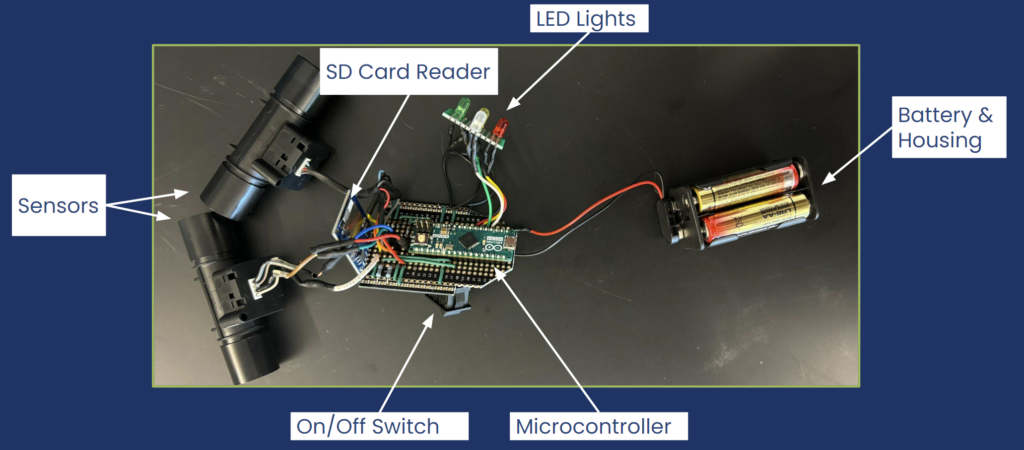Initial Design Ideas
- Design #1: Handheld Device
- Handheld, portable and wireless
- Battery operated
- LED lights indicate performance per trial based on FEV1 and FVC measurements
- User can breathe directly into mouthpiece
- Detachable mouthpiece for cleaning and disinfection
- Replaceable air filter beneath mouthpiece
- USB-C port for data transfer
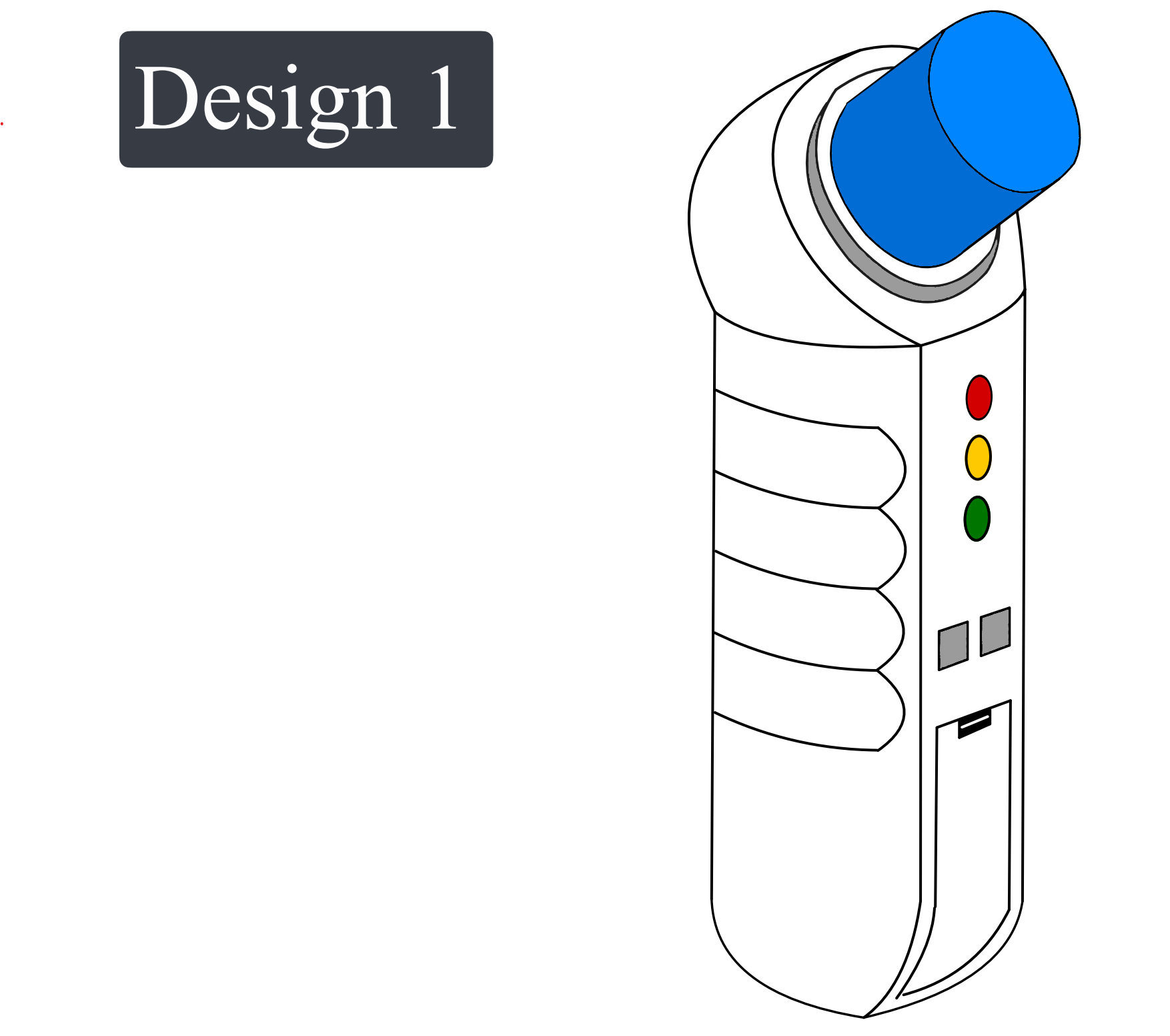
- Design #2: Tabletop Based
- Tabletop device with adjustable height for users to use while sitting or standing
- Larger size can accommodate larger parts
- Wireless, battery-operated device
- More flexible mouthpiece to accommodate the user’s position
- Detachable mouthpiece allows users to clean and disinfect the device
- Replaceable air filter
- USB port allows data to be transferred and shared with healthcare providers
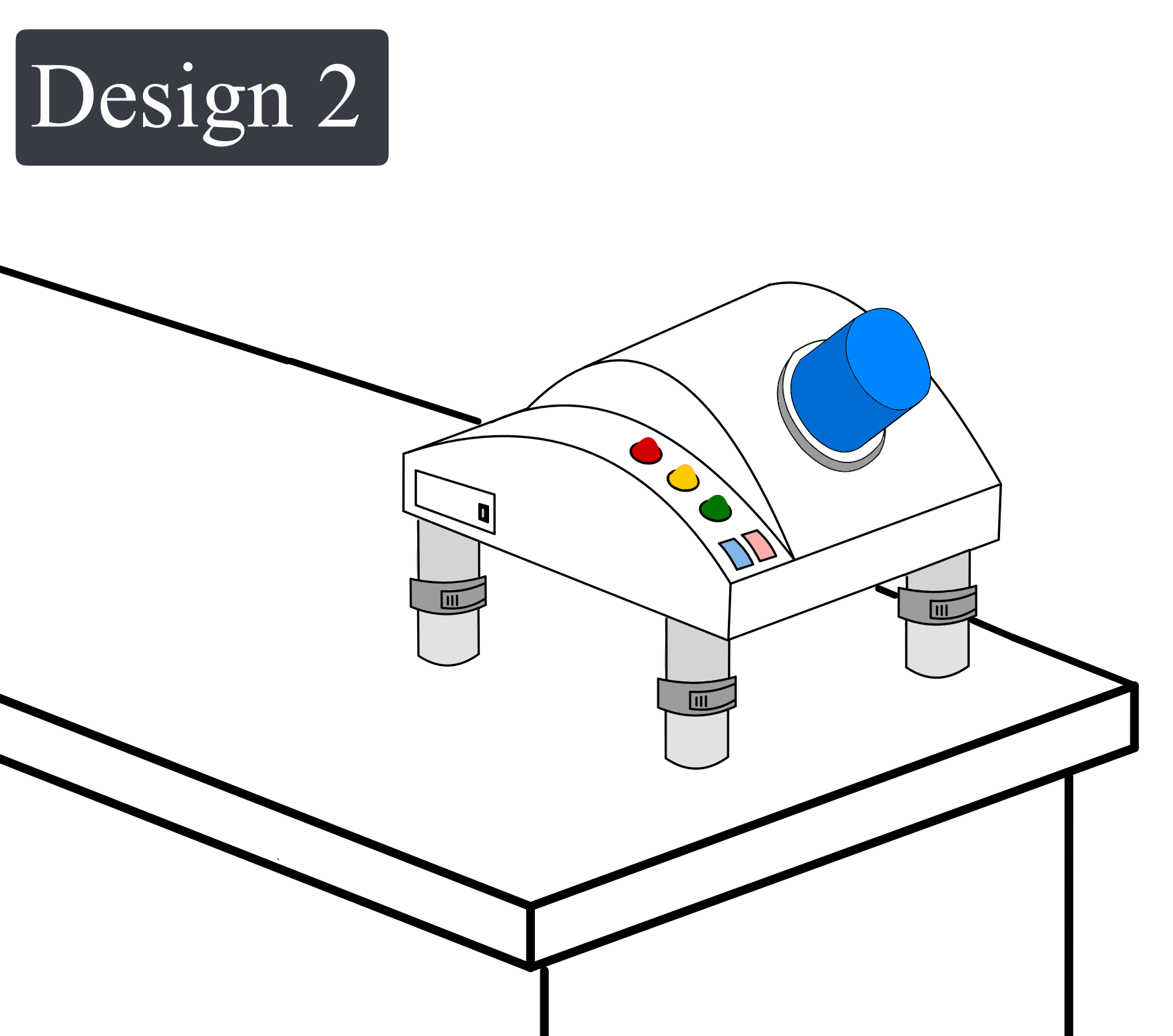
- Design #3: Two-Unit Device
- Handheld device containing mouthpiece and air filter
- Separate tabletop unit for adjusting settings and observing outputs
- Holster on tabletop unit to hold breathing device
- Individual battery sources for each unit
- Removable mouthpiece for cleaning and disinfection
- Replaceable air filters beneath mouthpiece
- Micro-USB port allows for data to be exported
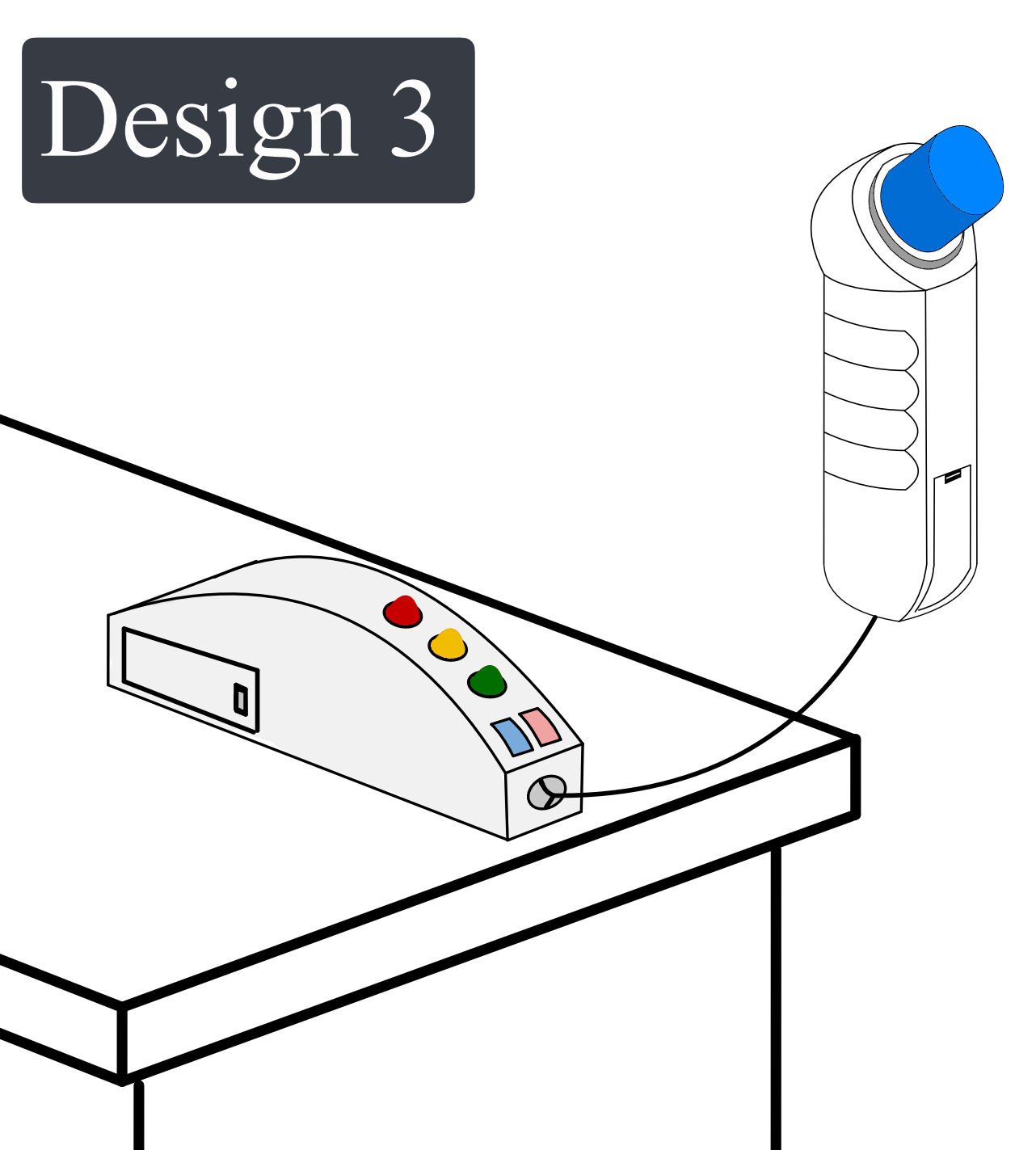
Airway Splitter
Because of the use of flow sensors that can only record up to 300 LPM, in order to record up to 550 LPM, two flow sensors will put in parallel to ensure that the 550 LPM threshold can be recorded. ANSYS Fluent simulations were performed for pressure and velocity to ensure that the air was split evenly for the two flow sensors. The results from the CFD simulations resulted in an even split of the 550 LPM in the inlet.
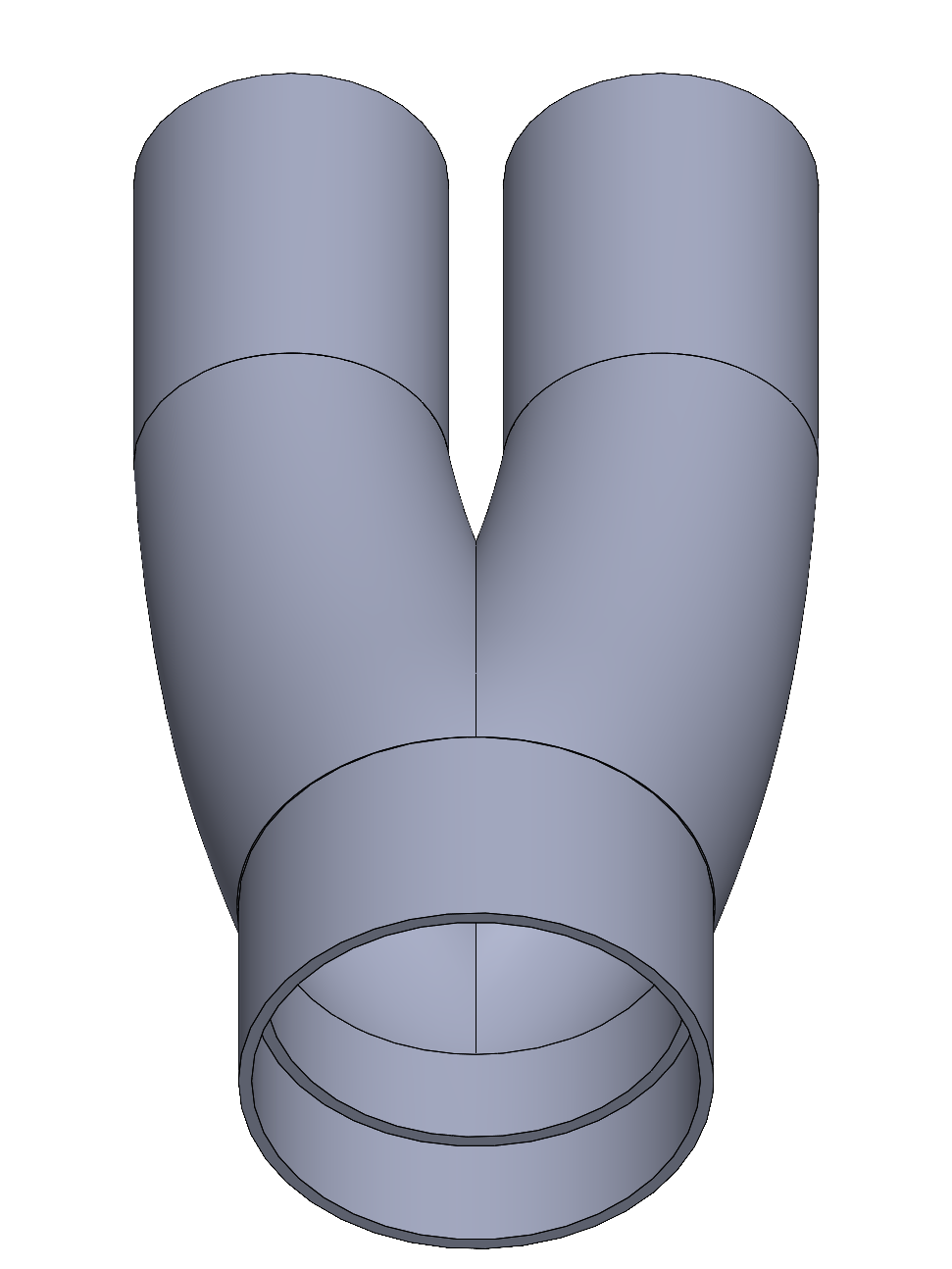
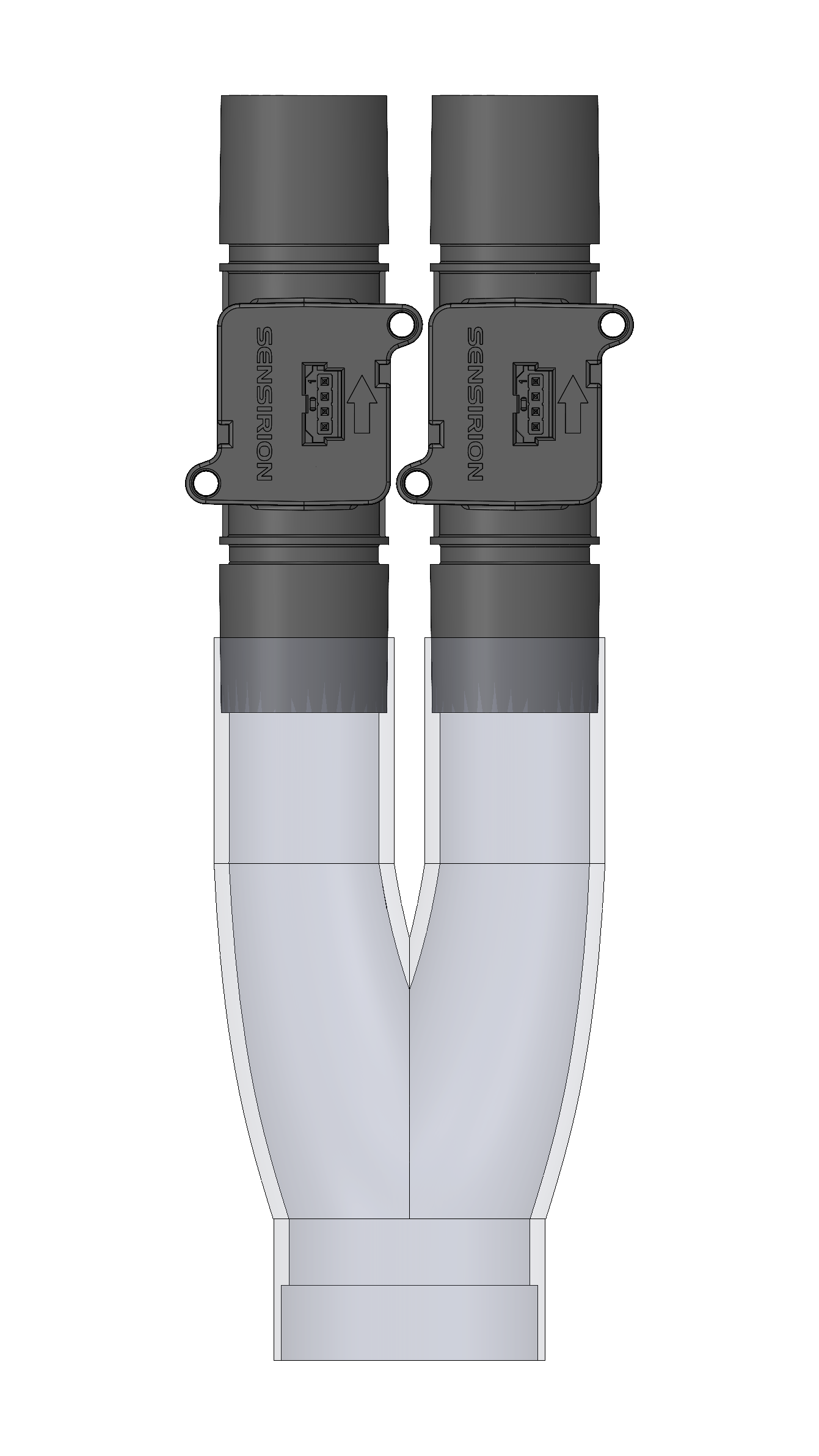
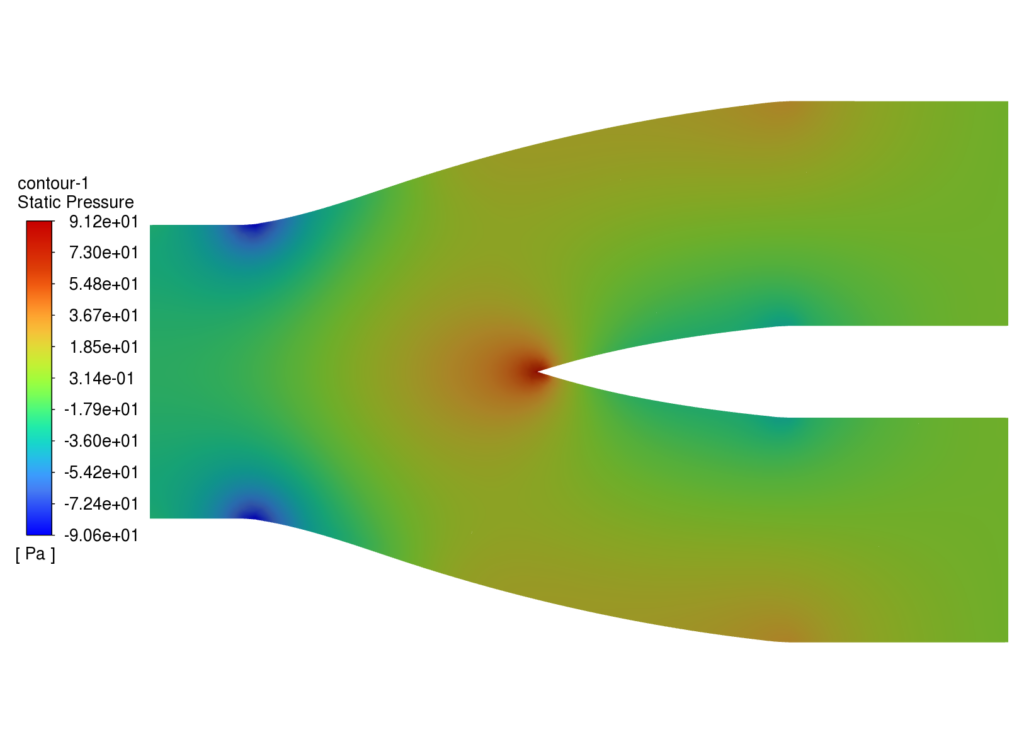
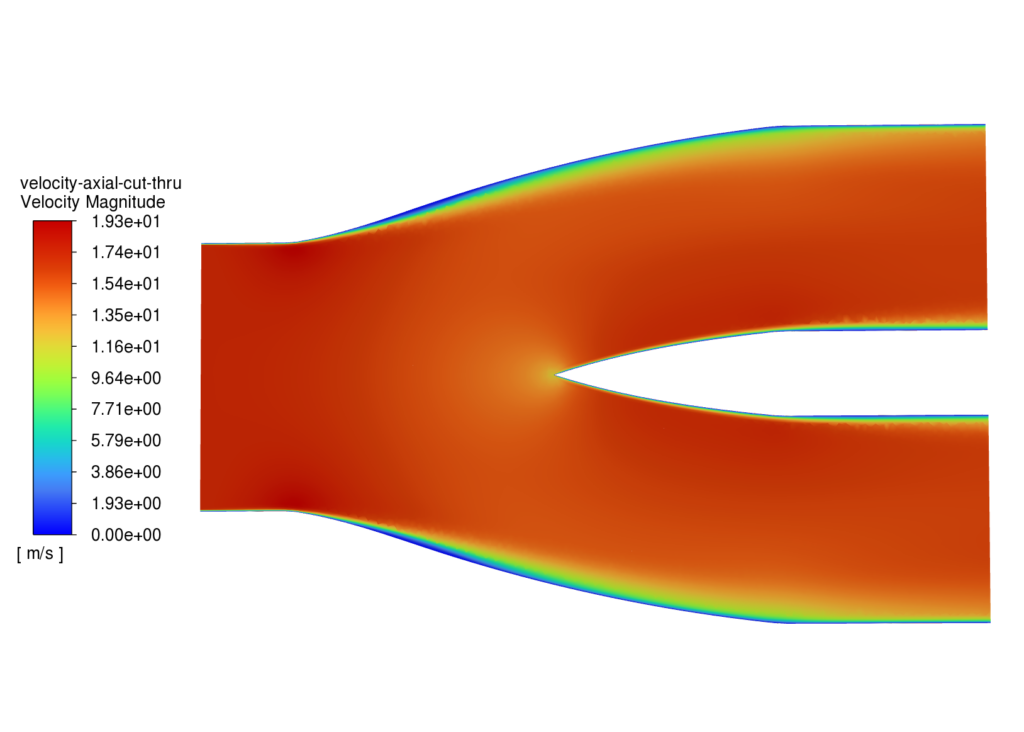
Sensor Verification was performed to determine the accuracy of the two sensors. A flow rate was tested at differing rates to obtain the values from the sensors:
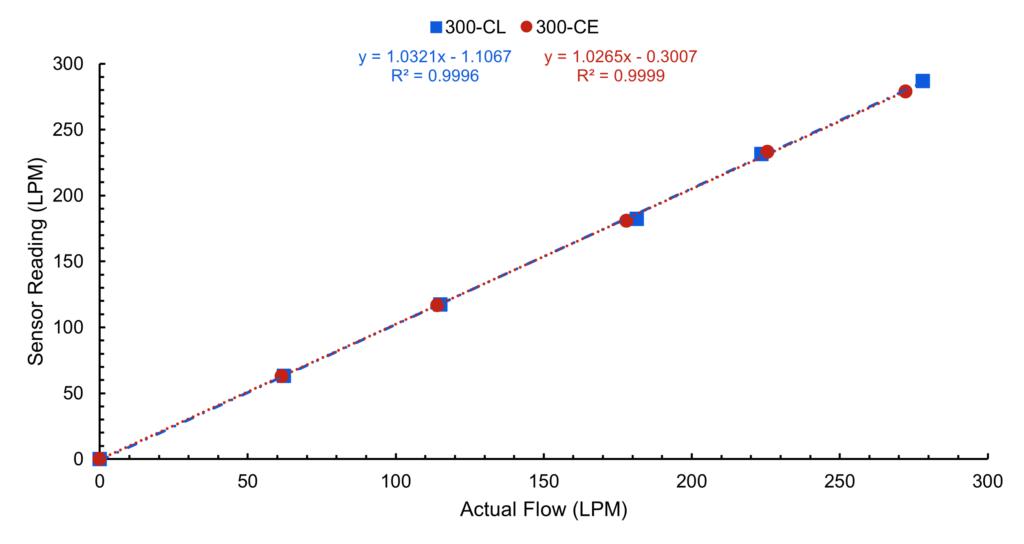
Design Prototype
Final Design of Device
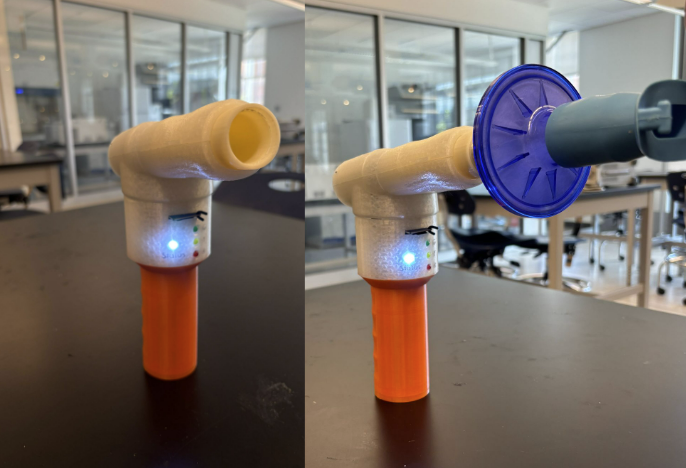
Electrical Components Schematic
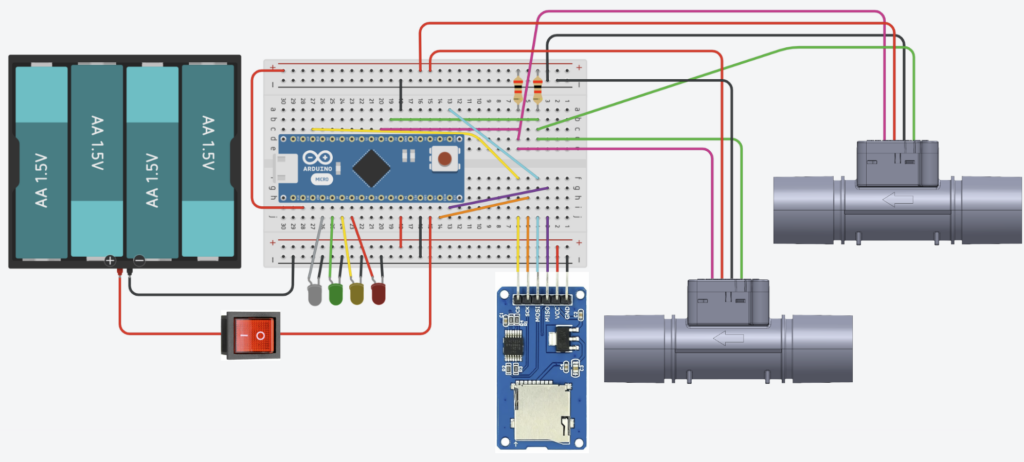
PCB and all the Electrical Components
